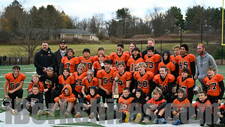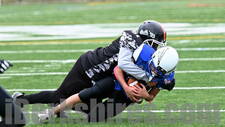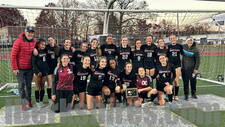20 Years Of "Hooking Up" At Williams College01:35PM / Thursday, June 14, 2007
Williamstown - Williams College marked a milestone this year: 20 years of being connected to the Internet.
"We were the first small school to get a direct connect to the Internet," said Thomas Murtagh, professor of computer science, who played a key role in 1987.
Fast forward to today. The increase from 10 computers connected to the Internet at Williams in 1987 to at least 3,900 in 2007 shows the foresight of those who early on made the case that an Internet connection was something worth having.
"At the time it was not that obvious that you wanted to be connected to the Internet," said Murtagh. "You really had to convince people."
Computers connected to the Internet are everywhere on campus. According to Seth Rogers, associate director of desktop systems, there are about 1,200 primary and secondary computers for faculty and staff. The college's Office of Information Technology maintains about 570 classroom, lab, and public computers. The college library system maintains about 200 library, staff, and public computers. Rogers said that about 95 percent of Williams' 2000 undergraduates bring their own computer with them to campus.
Murtagh noted that the Internet began in 1969 when four computers were interconnected as part of a U.S. Department of Defense research project called ARPANet.
By 1981 there were about 500 computers connected to the Internet, and
with technological advances and increased interest this "network of
networks" started growing rapidly.
"By 1986 there were about 5,000 machines connected to the Internet," Murtagh said. "And large research institutions' computer science departments were connected to this network. Most of the rest of the world didn't know it existed."
Purdue computer scientist Douglas Comer started the Cypress project to explore ways of providing low-cost Internet access to the scientific community. Murtagh, who came to Williams in 1986, knew Comer and knew about Cypress.
In 1987, Murtagh and his Williams colleague Kim Bruce made the case for hooking the college up to the Internet. Referring to an article from Science magazine, Murtagh stressed in a 1987 memo to Williams administrators the Internet's value to scientists and its status as an emerging technology. "The college, luckily, was open-minded," he noted.
The telephone company, however, was befuddled when Murtagh called to
set up the Internet phone connection. Fortunately, however, the Cypress project provided an exact list of what to request.
By today's standards, the college's first connection to the Internet was extraordinarily slow. The link was just 9,600 bits-per-second. By comparison, a major research university at the time might have had a 56,000 bits-per-second link - the speed of the average home dial-up connection in 2007.
And one couldn't just connect to the Internet from a desktop computer. First, one had to log onto a computer named ACAD 1, which was located in Jesup Hall on campus.
"The idea that you could somehow send a message from your computer and somehow get it to the rest of the world didn't exist yet," Murtagh said.
The campus had 10 computers that could connect to the Internet in 1987, including a lab for students with six workstations.
"That's actually significant because that meant we were a larger fraction of the Internet then than we are now," Murtagh said. "There were only 5,000 other computers, and we had 10."
"Our initial connection was totally insane," he said. "We had a telephone connection that went from here to Boston, because the Purdue people had a connection to Boston. Then our data went from Boston to Purdue to get it out into the rest of the world."
At the end of the Cypress project in 1989, Williams joined a regional network offering Internet connection started by Harvard, Boston University, and MIT. And the rest, as they say, is history. |


















